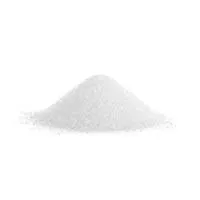
glacial acetic acid 99
Glacial Acetic Acid A Comprehensive Overview
Glacial acetic acid, also known as ethanoic acid, is a colorless liquid organic compound with a pungent odor. Its chemical formula is CH₃COOH, and it is characterized by its high purity, containing more than 99% acetic acid. The term glacial refers to its ability to solidify into a crystalline form at lower temperatures, specifically below 16.6 °C (62 °F), resembling ice. This distinctive feature sets it apart from dilute acetic acid solutions, making glacial acetic acid an essential compound in various chemical and industrial processes.
Physical and Chemical Properties
Glacial acetic acid possesses several intriguing physical properties. It is hygroscopic, meaning it can absorb moisture from the air, which is crucial to consider during storage and handling. The boiling point of glacial acetic acid is around 118 °C (244 °F), and its melting point is about 16.6 °C (62 °F). The compound is miscible with water, which allows it to form various concentrations of acetic acid solutions depending on the required application.
Chemically, glacial acetic acid is a weak acid with a pKa value of about 4.76, which indicates its strength relative to other acids. It readily participates in chemical reactions typical of carboxylic acids, including esterification, dehydration, and acid-base reactions. The ability to form esters is particularly significant in organic synthesis and food chemistry.
Production and Applications
Glacial acetic acid is usually produced through the carbonylation of methanol or through the oxidation of acetaldehyde. The industrial production methods have enabled the supply of this essential chemical for a variety of applications.
glacial acetic acid 99

One of the most significant uses of glacial acetic acid is as a precursor in the production of various chemical compounds. It is instrumental in synthesizing acetate esters, which have various uses, including solvents, flavorings, and fragrances. Moreover, glacial acetic acid serves as a key ingredient in producing acetate fibers, such as rayon and cellulose acetate, which are used in textiles and photographic films.
In pharmaceuticals, glacial acetic acid is utilized to produce various medicinal compounds, including analgesics and anti-inflammatory drugs. It acts as a reagent in acetylation reactions, which enhance the biological properties of different molecules. Furthermore, its antimicrobial properties make it useful in food preservation and as a pickling agent.
In addition to these applications, glacial acetic acid has a role in the laboratory context as a solvent for organic reactions and as a reagent in analytical chemistry. Its ability to dissolve a wide range of polar and non-polar compounds makes it an indispensable tool in the chemistry domain.
Safety and Handling
Despite its many applications and usefulness, it is essential to handle glacial acetic acid with care due to its corrosive nature. Direct exposure can lead to skin burns and damage to the eyes, and inhalation of vapors can cause respiratory irritation. Therefore, appropriate personal protective equipment (PPE), including gloves, goggles, and masks, should be worn when handling this compound. Additionally, it should be stored in a cool, ventilated area away from incompatible substances to prevent any hazardous reactions.
Conclusion
Glacial acetic acid is a versatile and vital compound with widespread applications in the chemical, pharmaceutical, and food industries. Its unique properties and ability to participate in various chemical reactions render it a valuable reagent for scientists and industries alike. However, proper handling and safety measures must always be observed due to its corrosiveness. As we advance in chemistry and related fields, glacial acetic acid will continue to play a crucial role in innovation and product development. Understanding its properties, production methods, and applications not only highlights its importance but also paves the way for safer and more effective use in various industries.
-
Sodium Dichloroisocyanurate Safety Handling ProtocolsNewsJul.29,2025
-
Mining Chemicals for Copper Extraction Processes GuideNewsJul.29,2025
-
Fertilizer for Sale Shipping and Storage TipsNewsJul.29,2025
-
Dimethyl Disulfide as Sulfurizing AgentNewsJul.29,2025
-
Benzotriazole Safety Data Handling and Storage GuidelinesNewsJul.29,2025
-
Ammonium Bicarbonate Safety Handling Storage GuidelinesNewsJul.29,2025
-
The Transformative Role Of Trichloroisocyanuric Acid in Water TreatmentNewsJul.23,2025
Hebei Tenger Chemical Technology Co., Ltd. focuses on the chemical industry and is committed to the export service of chemical raw materials.
-

view more DiethanolisopropanolamineIn the ever-growing field of chemical solutions, diethanolisopropanolamine (DEIPA) stands out as a versatile and important compound. Due to its unique chemical structure and properties, DEIPA is of interest to various industries including construction, personal care, and agriculture. -

view more TriisopropanolamineTriisopropanolamine (TIPA) alkanol amine substance, is a kind of alcohol amine compound with amino and alcohol hydroxyl, and because of its molecules contains both amino and hydroxyl. -

view more Tetramethyl Thiuram DisulfideTetramethyl thiuram disulfide, also known as TMTD, is a white to light-yellow powder with a distinct sulfur-like odor. It is soluble in organic solvents such as benzene, acetone, and ethyl acetate, making it highly versatile for use in different formulations. TMTD is known for its excellent vulcanization acceleration properties, which makes it a key ingredient in the production of rubber products. Additionally, it acts as an effective fungicide and bactericide, making it valuable in agricultural applications. Its high purity and stability ensure consistent performance, making it a preferred choice for manufacturers across various industries.











